The Sound Cat Veterinary Hospital
Dental Hygiene
Just as it’s important for you to see a dentist regularly, it’s important for cats as well. Your pet’s oral health is directly connected to their overall health.
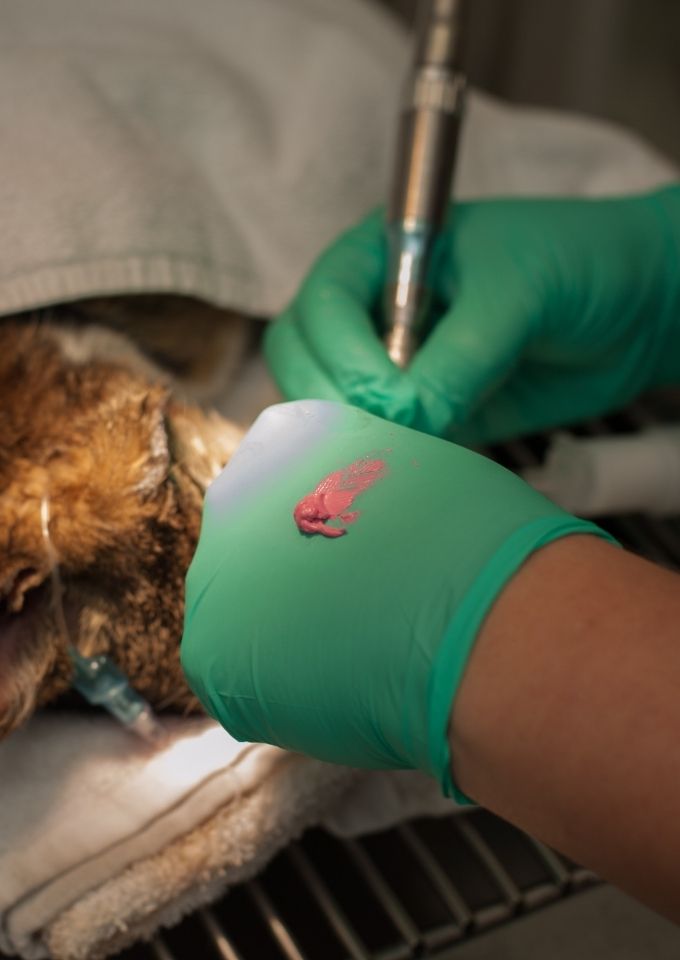
Veterinary Services
Dental Hygiene
Periodontal Disease is a major health risk for your pet
- It is the most common disease in small animal practice.
- It is PAINFUL. Most frequently, cats with oral pain “suffer in silence.”
- It is PREVENTABLE (the term for prevention is “prophylaxis”).
- Treatment is a catch-up game to get problems under control when there may already be permanent damage to the oral cavity or internal organs.
Cats with routine dental care typically live longer and healthier lives. Cats with dental disease constantly release bacteria from their mouth into their bloodstream (i.e. bacteremia), resulting in inflammatory changes in the heart muscle, liver, and kidney tissue in otherwise healthy animals. This problem may be exacerbated in pets that already have other existing diseases.
- Gingivitis: inflammation of the gingiva (i.e. gum line) only.
- Periodontitis: inflammation and disease of all structures that support the teeth.
- Plaque: a “biofilm” consisting of 80% bacteria and bacterial toxins, 20% cellular debris, and food remnants. It is plaque (especially below the gum line) that causes gingivitis and periodontitis.
- Calculus (i.e. tartar): is mineralized plaque that cannot be brushed off
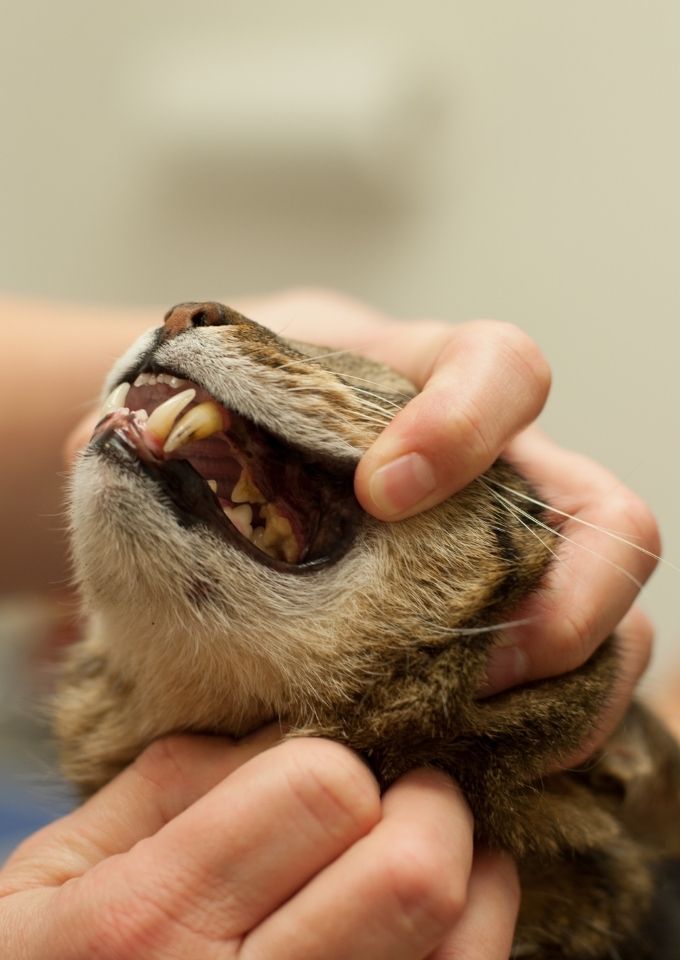
Dental Report Card
One of our veterinarians may give you a dental report card for your pet at his/her exam. This is to help you understand what level of dental disease your pet has and what treatment is necessary to minimize the progression of oral discomfort and disease.
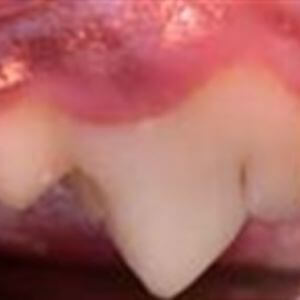
Nice Job! No sign of plaque or calculus
Home dental care is needed to maintain these healthy teeth and gums. Brushing your pet’s teeth regularly (3-4 times per week) is ideal. There are also products available to help make home dental care easier if brushing is not an option.

Stage 1 – Mild Gingivitis
The margin of the attached gum is inflamed and swollen. Plaque covers the teeth. Home dental care is needed. If there is no improvement, dental cleaning is needed within the next year to remove current plaque buildup.

Stage 2 – Moderate Gingivitis
The entire gum line is inflamed and swollen. The mouth is painful and odor is noticeable. Dental cleaning to remove calculus is needed within the next month. A calculus control diet and/or home dental care are needed afterward for prevention.

Stage 3 – Severe Gingivitis
The gums are cherry red and bleeding – they are damaged by infection and calculus. A sore mouth and bad breath are evident. Dental cleaning to remove calculus is needed immediately. A calculus control diet and/or home dental care are needed afterward to prevent reoccurrence.
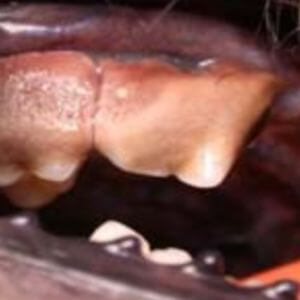
Stage 4 – Periodontal Disease
Chronic infection is destroying the gums, teeth, and bone. Bacteria are spreading through the body via the bloodstream and may damage the kidneys, liver, and heart. Dental cleaning to remove calculus is needed immediately. Some teeth may be loose and need extraction. Home dental care afterward is necessary for future prevention.
Innovations in Preventative Dental Care
Prescription Diet t/d® (Hill’s Pet Nutrition)
This is a very effective dental diet with a fiber matrix technology that scrubs the entire exposed tooth surface to reduce plaque tartar and stain. There are scaled-down over-the-counter versions marketed as Science Diet® Oral Care™ diets.
OraVet™ (Merial)
This is a unique oral hygiene product that provides an invisible barrier to prevent plaque and tartar accumulation. It electrostatically adheres to the tooth’s surface and will not disappear after tooth brushing or eating hard food. It is odorless, tasteless, and only needs to be applied ONCE PER WEEK. It has been shown to reduce plaque by 22% to 46% over an 8-week period compared to patients not receiving the product.
C.E.T.® HEXtra™ Premium Chews (Virbac): Dogs Only
These rawhide chews are covered with 10% chlorhexidine, combining the mechanical plaque-removal action from chewing with the bacterial, fungal, and viral fighting ability of chlorhexidine. After at least one minute of contact time, the chlorhexidine will bind to the teeth and gums and continue to be effective for up to 24 hours. Chlorhexidine is the most effective plaque-inhibiting substance in people.
C.E.T® AquaDent™ and Oral Hygiene Rinse™ (Virbac)
AquaDent is a drinking water additive that helps freshen your pet’s breath and prevent plaque accumulation. C.E.T. Oral Hygiene Rinse combines 0.12% Chlorhexidine and Zinc Gluconate in a plaque-fighting formulation that may be used with or without brushing. It also contains Cetylpyridinium chloride for fresh breath fast. A unique bent-stem applicator is also included for easy administration.
MAXI/GUARD® OraZn™ (Addison Labs)
This is a zinc product in oral preparation. Zinc helps to heal gum tissue, reduce halitosis (i.e. bad breath), and decrease inflammation. A pea-sized amount of this tasteless gel can be applied daily to the outer surface of the upper molar teeth. The bathing action of the oral cavity then distributes the product throughout the mouth.
DenTees™ Stars and Chews (DermaPet)
These are digestible dental treats that contain sodium hexametaphosphate, acetic acid, grapefruit seed extract, and clove. They work by binding minerals, thus preventing their use in the formation of tartar from plaque.
DentAcetic™ Wipes (DermaPet)
These dental swabs contain ingredients similar to DenTees™ and are used to wipe the teeth daily. Clove helps prevent pain while cinnamon and clove help to deodorize pets’ breath.
The Veterinary Oral Health Council (VOHC) was created in 1997 to certify veterinary dental products that effectively control plaque and calculus in cats and dogs. Look for “VOHC certification” to know if the dental product “claim” has been scientifically proven.
Brushing Your Pet’s Teeth
Step 1: Desensitizing to your Finger
Train your cat to accept your fingers in its mouth by gently rubbing its gums. Place dentifrice (i.e. toothpaste) on your finger and rub along the gum-line. You only need to do the lip-side of the teeth. Cats do not develop tartar as easily on the tongue side of the teeth. Thus, this process can be done with the mouth closed (i.e. teeth interlocked). Do this daily and continue this until your pet accepts this treatment without a fuss. Talk gently and be patient. Make this fun. Offer a treat or play after this procedure.
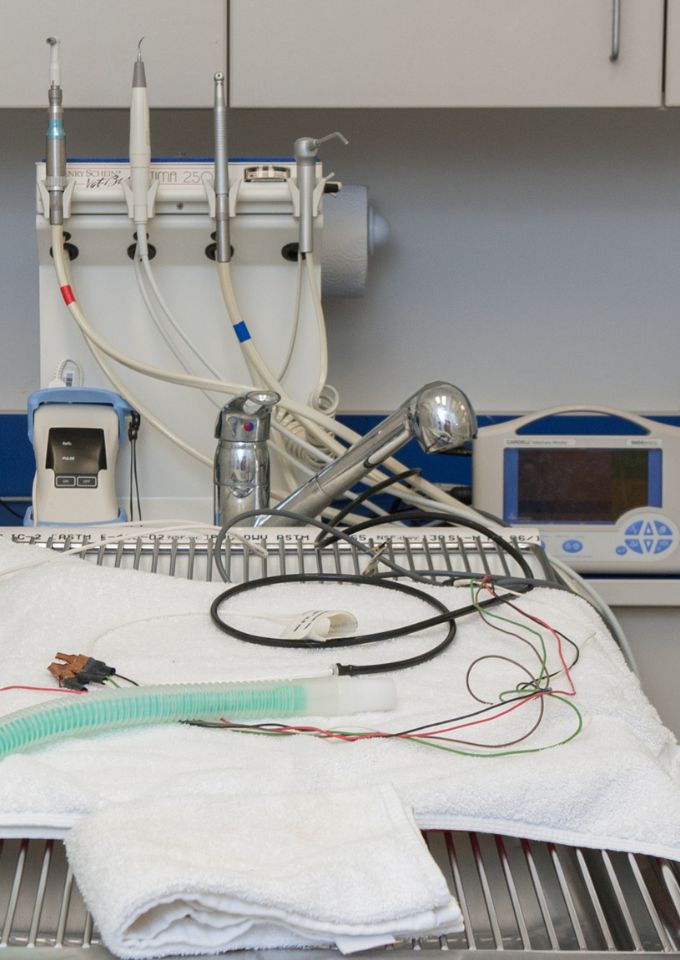
Step 2: Desensitizing to the Toothbrush
Once your cat has accepted your fingers, now is the time to start the introduction of a toothbrush. You should use a commercially produced brush made for cats, which has extremely soft bristles, or a human pediatric toothbrush. Start by introducing the brush only to the mouth. Be aware that your cat may be frightened at first. Be patient and talk softly. Start by placing the brush on one or two teeth along the gum line and hold the brush at a 45-degree angle to the tooth and gum. Gradually work around the mouth. This too may take a few weeks for your cat to accept. You can reach the back upper teeth easily by placing the brush under the upper lip while holding the muzzle shut with your other hand. If your pet refuses to accept this then return to using your finger for a period of time before reintroduction the brush.
Step 3: Brushing with Dentifrice
Use a dog/cat dentifrice only. Human toothpaste is not recommended. Human toothpaste tends to froth and cause stomach upset. Force the toothpaste DOWN INSIDE THE BRISTLES. If you place the paste on the top of the brush your cat will just lick it off. Daily brushing is best because plaque mineralizes into tartar in 24-48 hours. Once plaque becomes tartar it cannot be brushed off, only scaled off professionally. Many studies have documented the need for daily brushing as the most effective way to control plaque. After a few weeks, you should be able to brush almost all of the teeth without your cat resisting or struggling. Some owners can brush the tongue side of the teeth also. By using patience and gentle manipulation most cats will accept this procedure.
Step 4: Beyond Brushing
Tooth brushing is still the “gold-standard” of disease prevention in the mouth. However, we realize that there are certain obstacles to tooth brushing that are not always easy to overcome. Fortunately, there are now effective alternatives to brushing (see Innovations in Preventative Dental Care). Or use one or more of these products in addition to brushing for even better results.
Step 5: Dental Prophylaxis and Treatment
As with humans, annual dental cleaning and treatment are often necessary even if you are brushing your cats’ teeth daily. We will help you decide when this is appropriate.
